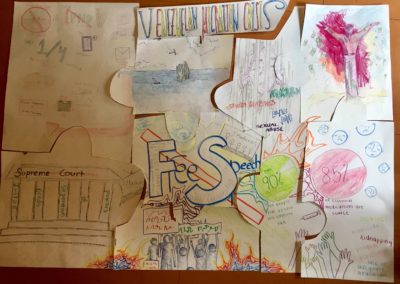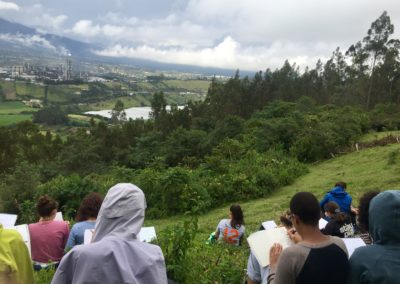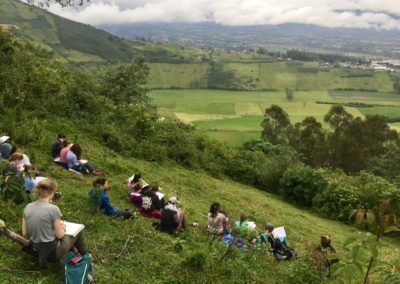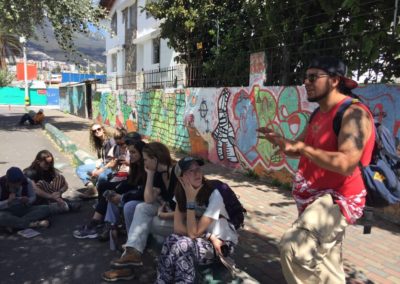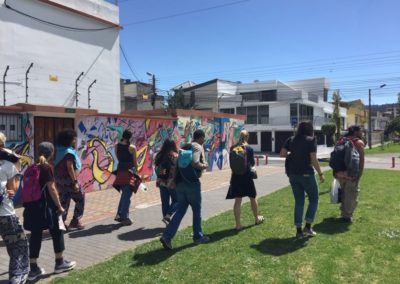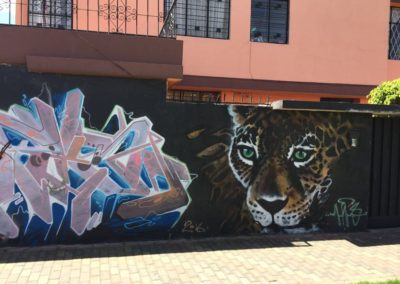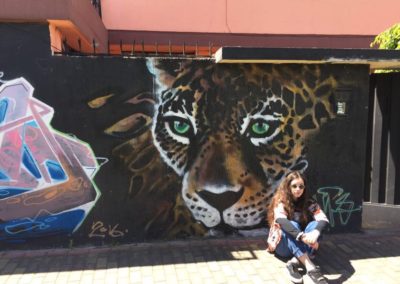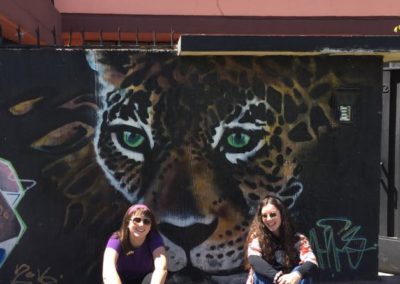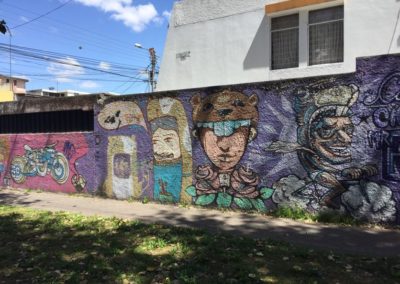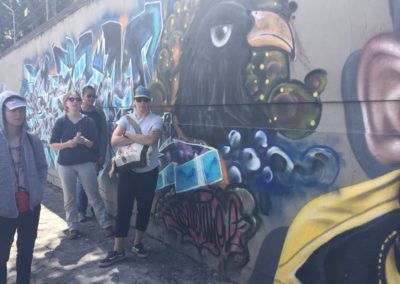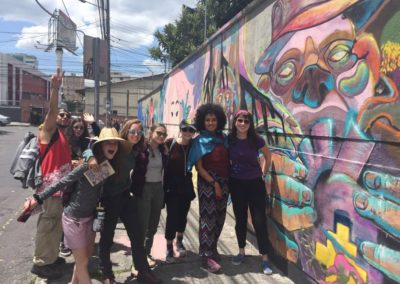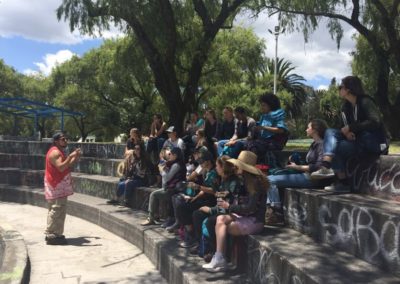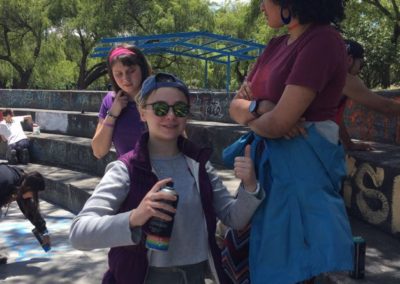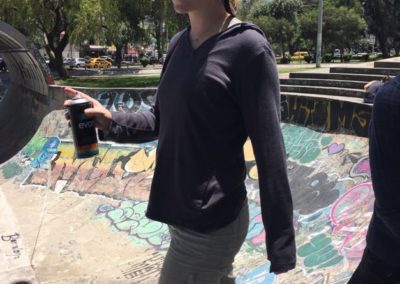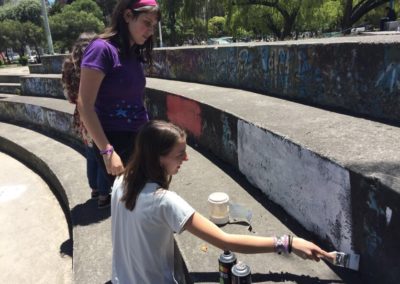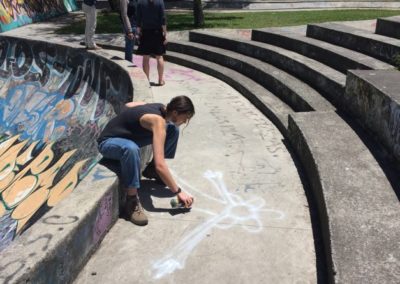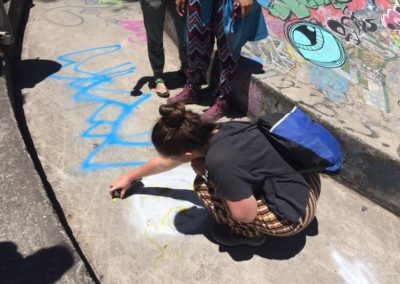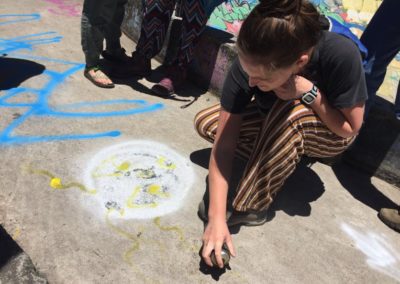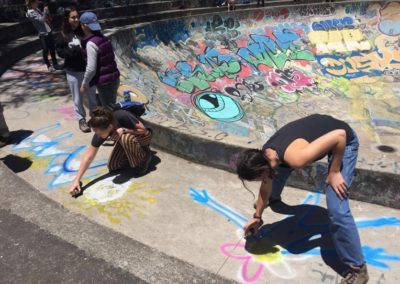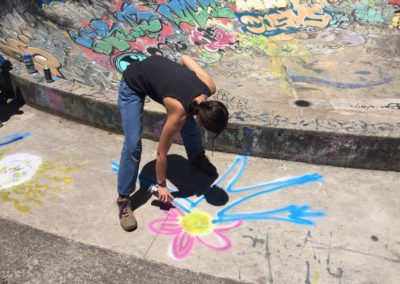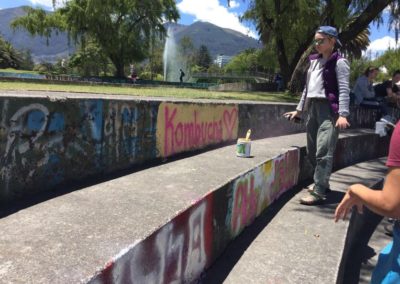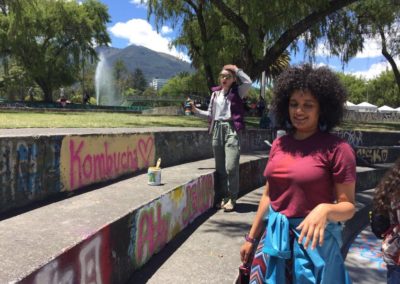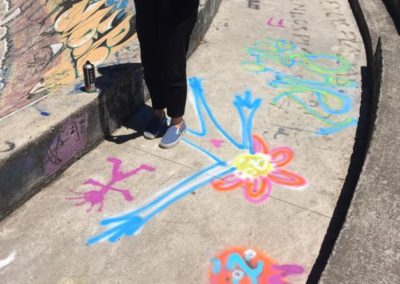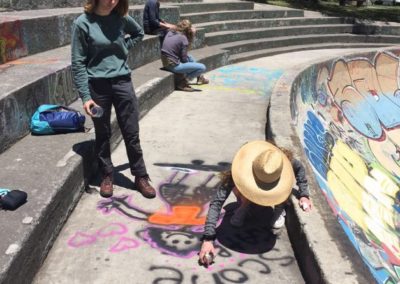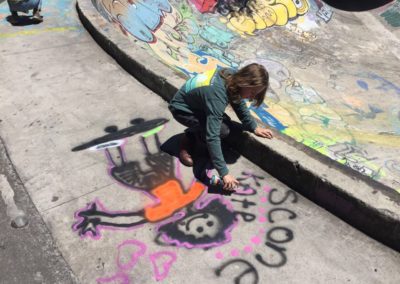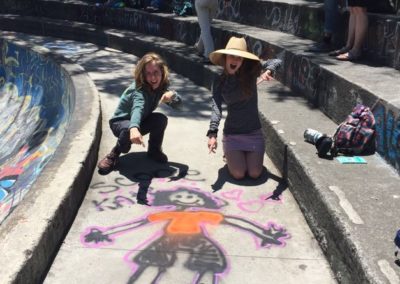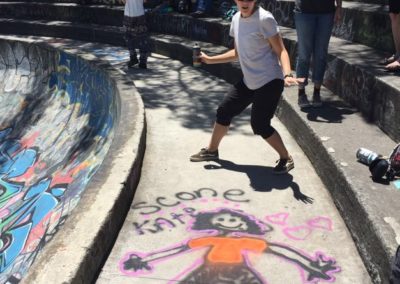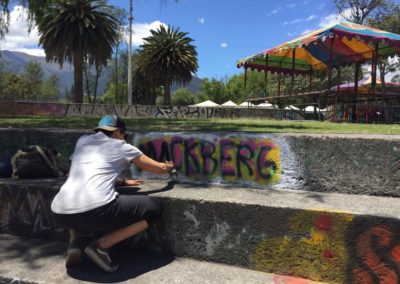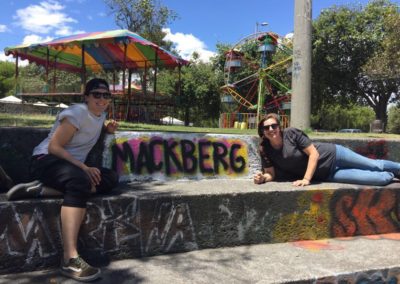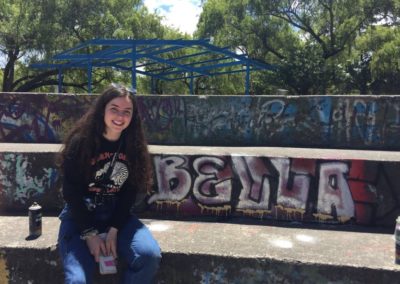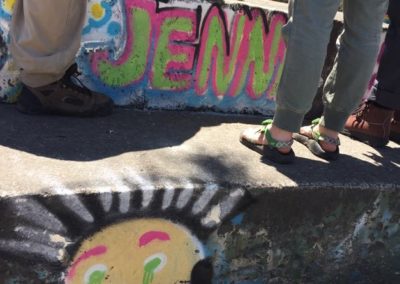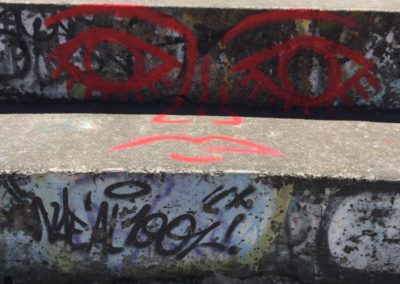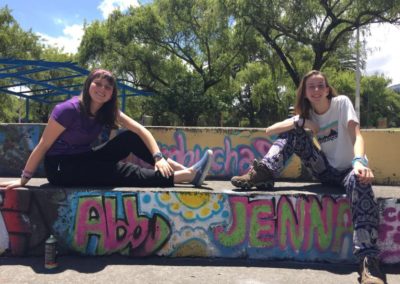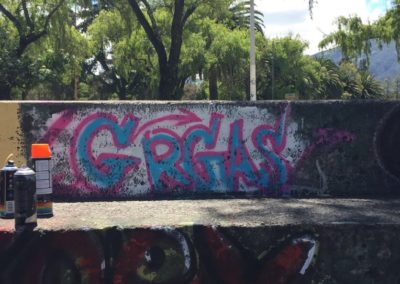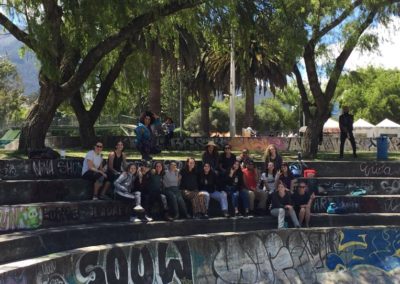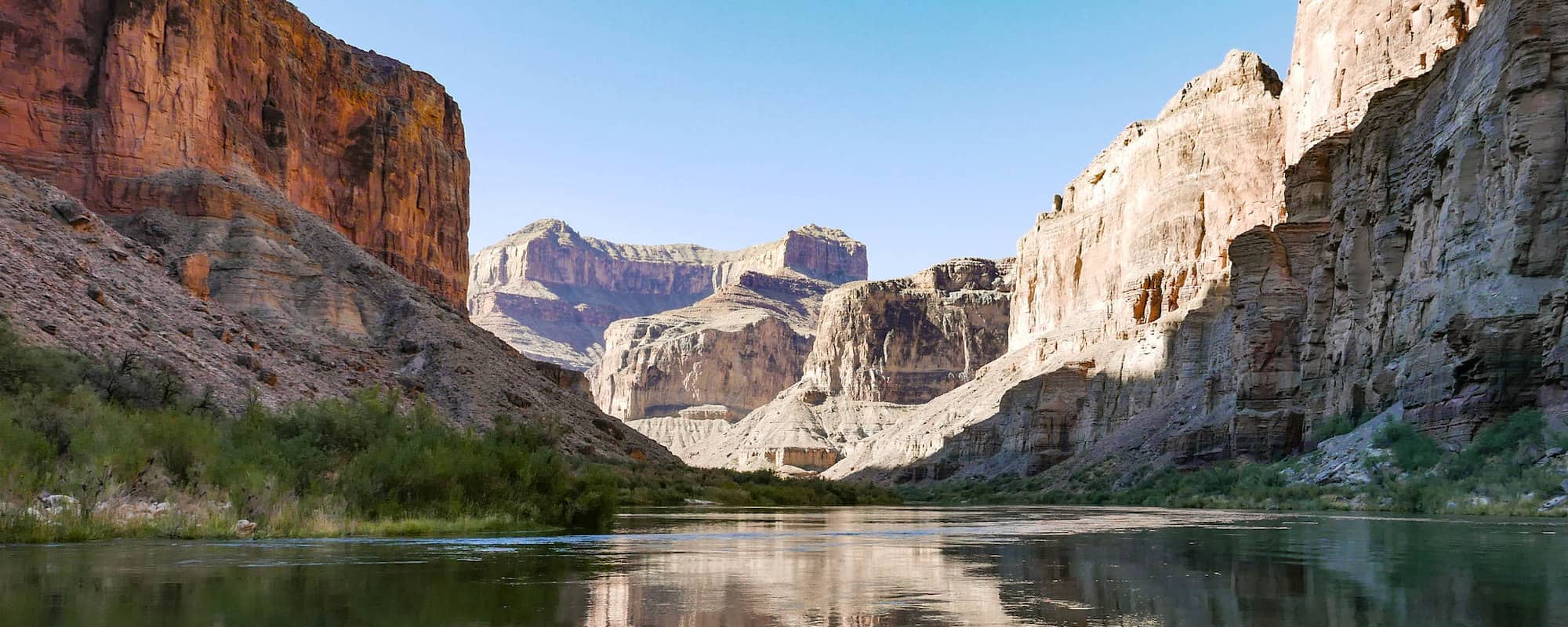Global Studies:
Global Studies has begun the semester by developing a lens for critical thinking as students, travelers, and global citizens. Our classes have included discussions and assignments related to how our own experiences have created the means by which we see the world, and recognizing how we want to broaden that perspective throughout our semester. We are diving into topics related to identity, privilege, and community-led development that will serve as a foundation for our learning and experiences in the coming weeks.
Current events project:
The students’ first significant Global Studies’ project of the semester included impressive explanations and creative presentations highlighting current events impacting the region and our areas of travel. One group taught the class about regional trends related to protests, as tensions have erupted as local populations of many countries are feeling that their governments are represent solely elite interests. Another group shared about Ecuador’s recent protests in October over the government’s implementation of neoliberal policies that hurt poor and working class communities, as well as the government’s recent implementation of strict visa requirements effectively prohibiting regular entry of Venezuelan migrants.
Kate, Abby H, Isabel, Ari and Maya taught the group about how the crisis Venezuela is causing an outpouring of migrants that is affecting the region. Their puzzle visual (pictured below) depicted the many complex pieces of the puzzle that is leading Venezuelans to flee the home country, due to poverty rates exceeding 90%, uncontrollable inflation, and the collapse of the state’s social structures. Their presentation culminated with an interactive activity highlighting how Venezuelans are often put into situations where regular migration is impossible, highlighting the vulnerable circumstances that Venezuelans find themselves in as a result.
Picture of puzzle in gallery below.
Literature:
C.S. Lewis wrote: “Literature adds to reality, it does not simply describe it.” With this frame in mind, students in literature have been diligently sinking their teeth into written works from across the globe, adding valuable layers of perspective and understanding to their personal experiences and the lived experiences of others. Two major thematic threads of the semester’s curriculum are exploring the capacity of the text as a tool for mediating identity on an individual and global scale as well as the text as a megaphone for the voiceless; as a powerful instrument for fomenting socio-political change at large. As week three comes to a close, we are wrapping up our first unit, which focused on poetry. Students read numerous poems such as “Los nadies” / “The Nobodies” by Uruguayan poet Eduardo Galeano and “La higuera” / “The Fig Tree” by fellow Uruguayan poet Juana de Ibarbourou. The former touches upon the construction of social hierarchies in Latin America, and students made insightful connections in class by comparing and contrasting the classist and racialized dynamics represented in the poem with what they perceive to be the social structures in the US. They also discussed the power dynamics behind designating certain voices as authoritative or authorized to speak while others are relegated to the margins. “La higuera” provided students with an opportunity to leverage a feminist lens to interpret the nature imagery in Ibarbourou’s poem as a critique of the expectations of women in 20th century Latin America. Students again made meaningful transference to conceptions of gender roles in their own lives and offered insightful reflections on evolving notions of femininity. In closing out our poetry unit, students are working on writing “I Am From” poems in which they will be mediating their own personal identities and origin stories using vivid imagery and literary tools that narrate places, people, experiences and culture that have made them who they are today.
For now, we are moving into our unit on short stories. A warm-up activity from yesterday’s class pushed the students to develop their economy of language by having them write 15-word stories. Below is an example of a 15-word story written by Zoe Lynch that describes the socio-political narrative communicated in Ecuadorean artist Oswaldo Guayasamín’s painting Potosí:
They lived as one would expect the screwed-over to. Hopelessly, aimlessly and simply. Insatiably.
Science:
As we have moved out of the tropical rainforest climate, we are excited to be reflecting on the idea of “analog forestry” that we learned in Mashpi. There, we saw the tropical rainforest in action and all of the life that it sustains, yet we also had the opportunity to see what our friends Oliver and Mari were doing to create a forest that mimicked the structure of the native forest while using plants that could provide food for their family. We’ve identified the different ways that organisms interact and examples of that in nature, specifically in the wildly biodiverse rainforest that we just visited in order to understand the complexities of the ecosystem. Now, as we are spending more time in the highlands we have had the chance to dig into the principles of agro-ecology that our friends in Mashpi used to design their farm in order to understand the native agriculture systems here. Our classroom includes comparing conventional agriculture to agroecology systems, exploring the power of medicinal plants at our recent cooking school lesson, and (hopefully!) soon to be building our own composts by searching for the most effective balance between nitrogen and carbon within the materials we’re using.
Additionally, students are continuing to work on their weekly field journals. Practicing careful observation and using words and pictures to express that students choose one plant or object from nature that they will describe each week. Their first week was in the tropical rainforest in which they found leaves that are representative of the ecosystem: often large, smooth leaves coming from plants of varying sizes. Students use objective observations and all of their sense to create a picture of what they are observing to the reader using the framework of statements beginning with “I notice…” “I wonder…” and “It reminds me of…”. This allows them to not only observe but begin to ask questions about the natural world and make connections to their experiences. Stay posted for some upcoming pictures of the weekly field journals!
History:
In history class, we have been learning about how the pillars of colonialism created land distribution, social hierarchies, and structures of “underdevelopment” that exist in Ecuador and throughout Latin America. We have been diving into how immense inequality in land distribution that was first created by colonial-era land grabs to enrich the Spanish crown – a structure that has remained in place for hundreds of years. During our week of homestays in the community of Agualongo de Quichinche, we have been learning about how the hacienda (estate plantation) system disrupted previous notions of land distribution throughout the Andes and laid the groundwork for social hierarchies on the basis of race/ethnicity. Agualongo’s community history is closely tied to a nearby hacienda that produces dairy products and cut flowers. As we hiked to a nearby overlook – students worked on sketching the landscape and asking questions about the historical context that would help them to better understand what they saw in front of them in the present. We learned about how land tenure is tied to wealth and status, which has kept indigenous communities like Agualongo in situations of economic poverty. Later in the week, a panel of generous community elders came to share their personal stories of work on the hacienda, and we learned about how many community members began to work in conditions of slavery on the hacienda since young ages. The opportunity to learn from them about their experiences and resilience has helped students to put names, faces, and personal stories to social issues that impact the communities we visit.
Pictures from history class in the gallery below.
Academic activities:
Our classroom time as well as experiential learning opportunities complement each other throughout our learning at the Traveling School. From reading the local landscapes and learning from guest speakers about how the issues that we discuss in the region impact what we see and hear around us, academic activities help bring our learning to life.
Our recent tour of graffiti and street art in Quito taught us about how urban art is used as a tool for social change. It was a unique opportunity to learn about the issues impacting the city, and how urban artists share their messages in a form of artistic “newspaper” on the walls of the city. We saw about how street art is used to highlight the messages and concerns of the city’s population who are often denied the space and opportunity to share their voices through public platforms. Our guide Isaac helped us to re-frame how we think about graffiti and street art — highlighting how this form of art and artists themselves are often stigmatized, which serves as a means of attempting to suppress their voices. During the walking tour, we saw how art is used on the streets to share messages about Ecuadorian identity, social issues, and unity. Isaac told stories about the role that street art and the street artist community has played in protesting unwanted changes within the city, such as a new metro system that has been problematic for many of the citizen’s residents. We spent the afternoon at a skate park that is open to street art and graffiti, and the students got to try their own artistic hands while using sprays. In our discussion afterward, students highlighted how the tour helped us to think of street art and graffiti in a completely different light. Thank you to the Nina Shuku Association — a Quito-based art collective of youth urban artists — for the unique and impactful opportunity.
Pictures from the graffiti tour in the gallery below.

